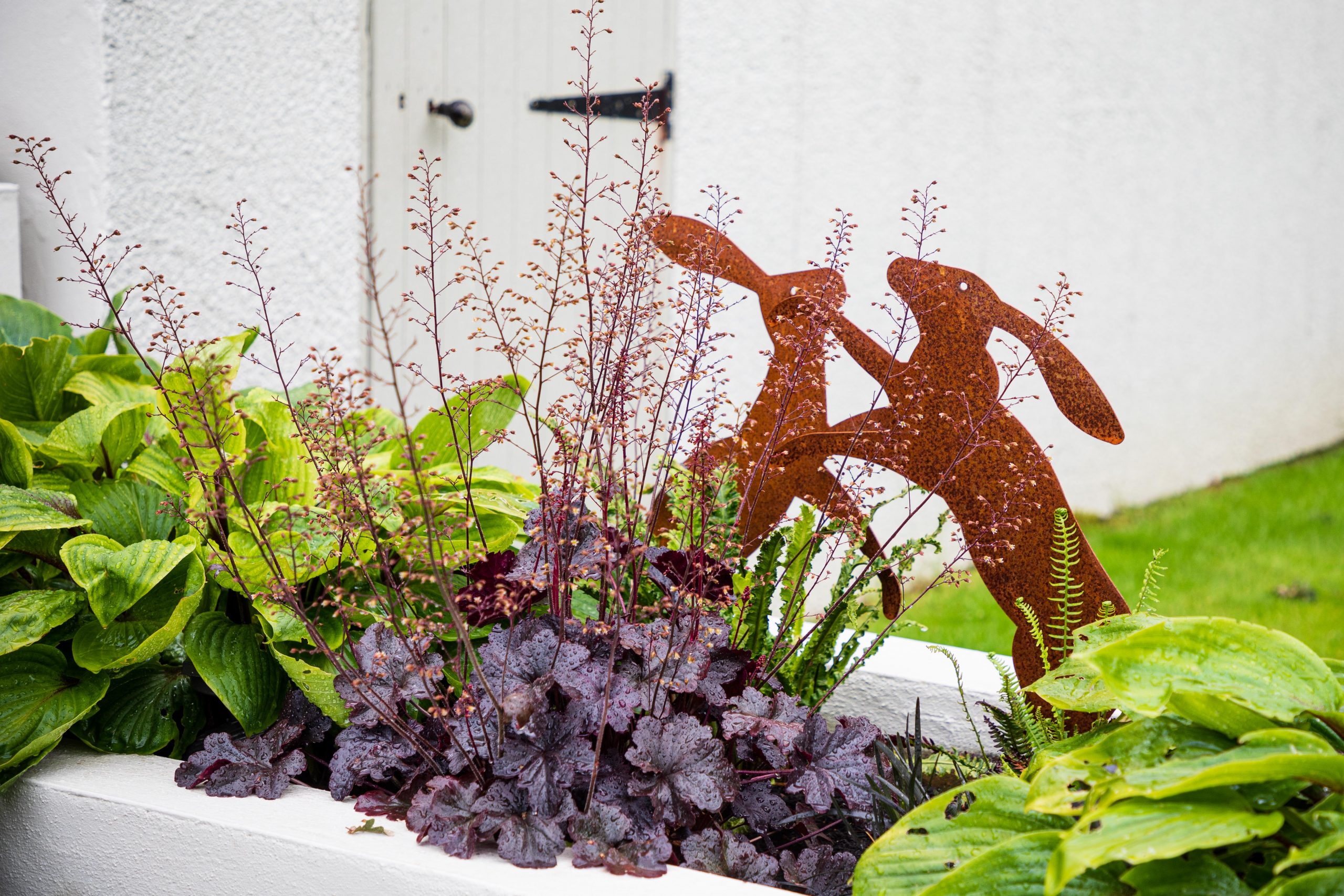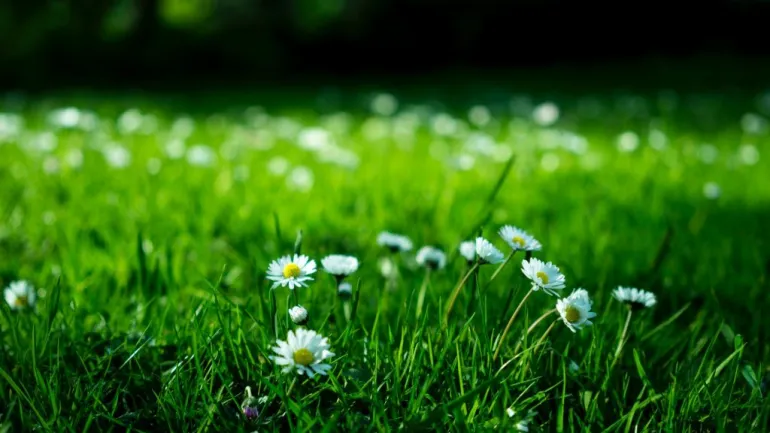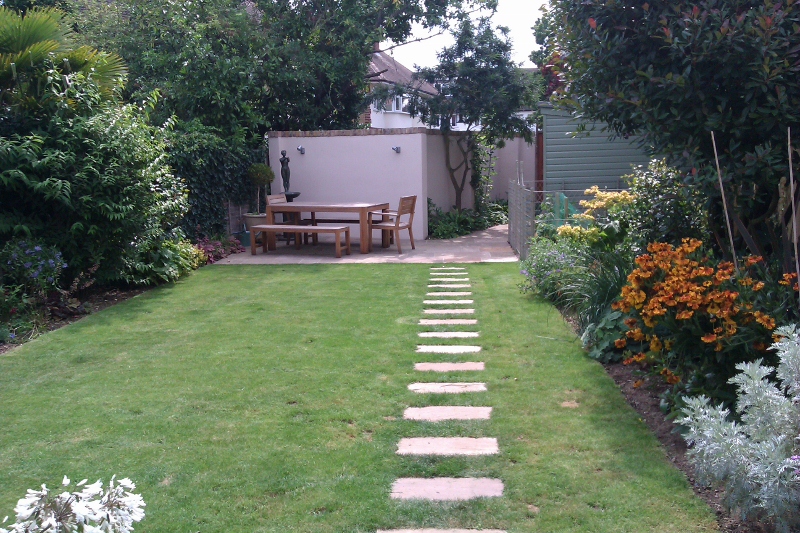Are you struggling with one or more of these issues?
I often see my job as a garden designer as a problem solver, but I’ve never listed all the problems that I have solved before. I was set a challenge to list as many problems as I could think of that I have solved for clients over the last 15 years. It was a very interesting exercise, and once I had 90 problems I grouped them into 3 main areas, they were:
Physical or structural problems
These problems require practical solutions. For example
- There may be a slope in the garden that needs leveling, with retaining walls, or steps.
- A new fence is needed,
- Path to a garden office or a shed,
- A good size place to sit and eat
- A lack of storage.
- Making the garden safer with new hard landscaping, replacing the old and cracked.
- A new garden building for working or shelter
- Working out a new plan following an extension
- Removing a garden building.
- A piece of land has been bought from next door.
- A bit of garden has been sold off.
- Removing a pond
These issues require space planning and knowledge of structures and how they work, ensuring the garden is safe and travel around the garden works for everyone. Walls need to be structurally sound and the garden practical as well as beautiful.
Aesthetic Problems
These problems are all to do with hiding the ugly bits of the garden, and making the most of its assets.
- Hiding the bins
- Creating new focal points to deflect the eye from less beautiful things.
- Making a small garden look bigger
- Making a narrow garden look wider
- Making the most of the vista
- Creating privacy or hiding an ugly view
- Using planting to create interest and year round colour
- The garden isn’t in your taste.
- There isn’t enough colour,
- Borders are too narrow,
- Garden is an awkward shape.
This group requires imagination, plant knowledge, ideas on features, be they sculpture, water, plants or trees, decorative trellis, and also a good knowledge of how shape and form can trick the eye. For example; Deep beds well planted will always make a garden look wider than a big lawn and narrow beds.
Mind set problems
This set of problems is the main reason someone comes to a garden designer. They don’t know how to start.
- A lack of knowledge
- No ideas
- Lots of ideas but no clue how to put them together
- Different ideas to your partner
- A lack of skill
- I can’t make any more decisions
- No time
- I am ashamed of my garden
- How much will it cost?
- I need a fresh start
- Clear out the old
- I have no experience, have never had a garden before.
- My plants keep dying
- I need to feel secure
- I need a haven to rest in
- I need help to make choices
This part of my job is the most important; I need to really listen to what each client is telling me, and what is often not said, to try to fully understand what they want from their garden. Is it a place to entertain and be social or a peaceful space to unwind from the trials of the day? Clients are often completely at a loss on how to start and how it all works. A good designer should be a great listener.
With lots of questions to tease out the conscious, and unconscious needs of each client in order to solve their problems, create the perfect garden for them and to be a guide through the process from start to finish.




best project